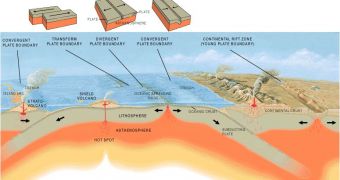Ever since the beginning of the Space Age, astronomers believed that the most important condition a planet had to fulfill in order to be able to sustain at least basic forms of life was to be in its star's “habitable zone,” an orbital area around each sun where the temperature was just right for liquid water. Now, ESA's scientific advisory committee chairman says that late tectonics could easily play an equally-important role, especially in the case of those planets that bear liquid water, but are outside regular habitable zones.
Tilman Spohn, who is also the director of the German Space Research Centre Institute of Planetary Research, gives the example of a world similar to the Europa moon, where an inner ocean could be contained within two massive layers of ice. Of course, it could theoretically sustain life, but it would also have to exchange gases or liquids with the exterior in order to ensure an unlimited supply of whatever chemical life on other planets would use to feed itself and grow.
And here is where plate tectonics come in. Wherever you have this phenomenon, gases get “traded” between the surface and the core of the planet, which creates a sort of ecosystem that needs millions of years to repeat once. But earthquakes and volcanic eruptions triggered by continental or oceanic plates, even though they would happen under water, would have the potential to feed a buried ocean with most chemicals it would need to start and even sustain basic forms of life.
“Plate tectonics replenishes the nutrition that primitive life could live on. Imagine a top surface that is depleted of the nutrition needed for bacterial life. It needs to be replenished, and plate tectonics is a method of achieving this. Plate tectonics is known to recycle carbon that is washed out of the atmosphere and digested by bacteria in the soil into the interior of the planet from where it can be outcast through volcanic activity. Now, if you have a planet without plate tectonics, you may have parts of this cycle, but it is broken because you do not have the recycling link,” Spohn says.
The German scientist also points out that searching for planets with tectonic movements could also be one goal of future space exploration missions, especially given the fact that current technologies are incapable of detecting life, if its buried under two or three miles of ice. He argues that plate movements, on the other hand, can be easily detected, and could draw astronomers' attention to one planet or another.

 14 DAY TRIAL //
14 DAY TRIAL //